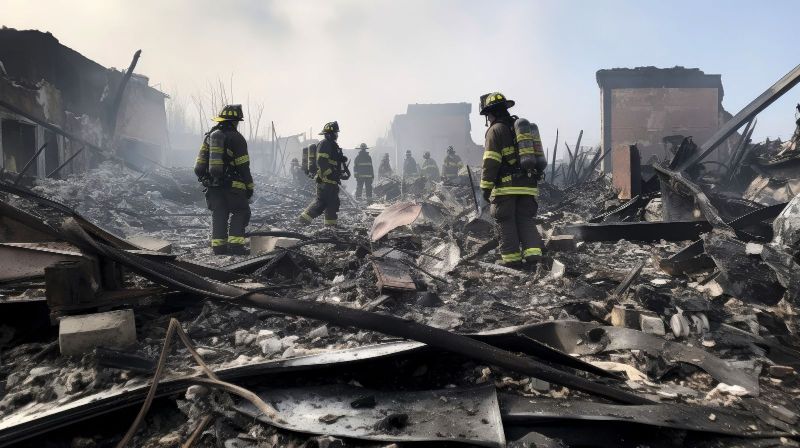In a world marked by unforeseen events and unpredictable disasters, the importance of emergency response cannot be overstated. Swift and efficient action during times of crisis can be the difference between lives saved and losses incurred. Whether it's a natural disaster like a hurricane, a fire, a medical emergency, or an industrial accident, having a well-structured emergency response plan in place is crucial. In this article, we will explore the significance of emergency response and the key elements that make it effective.
Understanding the Importance of Emergency Response
Emergency response refers to the coordinated efforts and actions taken to address and mitigate the impacts of a crisis or disaster. These crises can range from natural disasters, such as earthquakes and floods, to human-made emergencies like industrial accidents and terrorist attacks. In each case, the response time and effectiveness of the response plan play a pivotal role in reducing casualties, minimizing damage, and ensuring a swift recovery.
One of the fundamental aspects of emergency response is its ability to save lives. In medical emergencies, the timely arrival of paramedics and first responders can mean the difference between life and death. Similarly, during natural disasters, early warning systems and evacuation plans can significantly reduce the risk to individuals and communities. The ability to provide immediate aid and support to those affected is a testament to the importance of well-organized emergency response efforts.
Key Elements of Effective Emergency Response
- Preparedness: A successful emergency response begins with thorough preparation. This includes identifying potential risks, establishing communication systems, and conducting regular drills and simulations. Preparedness ensures that responders are familiar with their roles and responsibilities, and it minimizes chaos in the early stages of a crisis.
- Early Warning Systems: Early detection and warning systems are crucial in natural disasters. Whether it's a tsunami warning, a tornado siren, or a wildfire alert, these systems provide valuable time for people to take protective measures or evacuate.
- Communication: Effective communication is the backbone of any emergency response plan. This includes not only internal communication among responders but also clear and timely information dissemination to the public. Social media, emergency broadcasts, and mobile apps have become essential tools for sharing critical information during a crisis.
- Resource Allocation: An emergency response plan should include provisions for resource allocation. This means having access to necessary supplies, equipment, and personnel. Resource scarcity can exacerbate the impact of a crisis, so careful planning is essential.
- Coordination: Multiple agencies and organizations often play a role in emergency response. Coordination among these entities is vital to avoid duplication of efforts and ensure a unified response. Incident command systems are commonly used to manage these complex operations.
- Community Engagement: Engaging the community in emergency response efforts is crucial. Community members should be aware of the risks they face and know how to respond. Outreach and education programs can empower individuals and communities to take proactive measures.
- Adaptability: Emergency response plans must be adaptable to different scenarios. No two crises are exactly alike, so responders must be prepared to modify their approach as the situation evolves.
- Recovery and Rehabilitation: Effective emergency response extends beyond the immediate crisis. It includes plans for recovery and rehabilitation, such as restoring infrastructure, providing mental health support to survivors, and assisting with the rebuilding process.
Challenges in Emergency Response
While the importance of emergency response is clear, there are challenges that responders often face. These challenges can hinder the effectiveness of the response effort:
- Limited Resources: In some cases, resources such as medical supplies, equipment, and personnel may be scarce, especially during large-scale disasters. Prioritizing resource allocation becomes crucial in such situations.
- Communication Barriers: Poor communication can hamper the coordination of response efforts. This includes difficulties in reaching affected areas, breakdowns in communication systems, and language barriers when dealing with diverse communities.
- Logistical Challenges: Responders may encounter logistical challenges, such as damaged roads, blocked access, or adverse weather conditions, making it difficult to reach those in need.
- Evacuation and Sheltering: Evacuating people from danger zones and providing adequate shelter can be a logistical nightmare, especially in densely populated areas.
- Mental Health Support: Emotional and psychological support for survivors is often overlooked but is an essential aspect of recovery. The trauma of a crisis can have lasting effects on individuals and communities.
Emergency response is an essential component of disaster management, and its significance cannot be underestimated. Swift action during times of crisis can save lives, protect property, and expedite the recovery process. While challenges may arise, effective emergency response plans that emphasize preparedness, early warning systems, clear communication, resource allocation, and community engagement can help mitigate the impact of disasters.
As individuals, communities, and nations, we must recognize the importance of investing in emergency response infrastructure and training. A well-prepared and coordinated response can turn a potentially catastrophic event into a manageable crisis, ultimately leading to a more resilient society. In an unpredictable world, the ability to respond swiftly and effectively to emergencies is a skill that can make all the difference.

